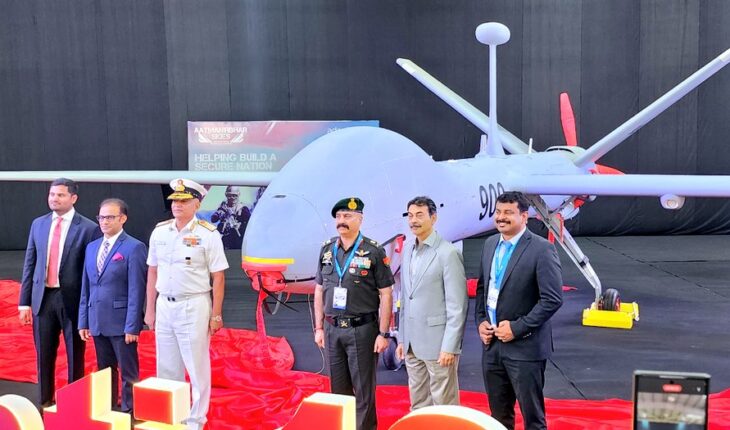The supply of 20 high-performing drones to Israel has enabled India to establish her capabilities in manufacturing the high-tech strategic unmanned aerial vehicles or UAVs.
The recent conflicts in Eastern Europe and West Asia have established the key role of strategic drones.
Initially, with the supply of the Indian made drone, Drishti-10, based on the platform of Hermes- 900 developed in Israel has made an entry in the highly competitive global armament markets. Interestingly, the supply of drones to the war-ravaged Jew state at an estimated price of two-million USD for each unit also establishes that India has capacity and capability to reciprocate the country, which has helped in manufacturing such unmanned aerial bombers, which could evade radars to hit the target with precision.
Their timely supplies to Israel has not only established India’s credibility as a manufacturer as well as cementing her strategic alliance with the terror-hit country. It is still under wraps how many countries have expressed their interests in obtaining such drones. The entry of a few well-known Indian companies in manufacturing them indicates that they expect to get huge orders from abroad for them
Apart from the Hyderabad facility jointly set up by Gautam Adani with an Israeli company, Elbit Systems, major Indian corporations such as Larsen and Toubro, Hindustan Aeronautics Limited, DCM Shriram have also started producing these high-tech dual use vehicles.
The success of the Hyderabad unit could be judged by the fact that within four years of its existence, the share of Indian components has reached almost 84 per cent.
Garuda Aerospace– With the recent announcement of one of India’s most admired cricketers, M.S.Dhoni that he was investing Rs. four crores, the Indian start-up, Garuda Aerospace has finally prepared for an IPO
Its drones have already been approved by the Director General Civil Aviation. These can be used for various civilian uses such as traffic controls in cities, disaster management and agricultural purposes.
Meanwhile, the South Block, which houses the Defense Ministry, has been helping new ventures by offering them financial back ups.
The Challenges– The India-made Drishti-10 drones equipped with sensitive radars can carry a payload of 459 kilograms to target the Houtis and Hezbollah hideouts. However, Israel is facing Iranian drones having much more capacity than the Drones being made available to other powers in the region.
The three variants of drones, Samad-3 and Shahed-136 have a range of 1500 and 900 kilometers respectively. The Qasif -2k series is being used by the Iran supported terrorists to hit targets in a radius of 250 kilometers.
Earlier Versions – Israeli drones’ earlier version, Hermese-450 were used by Azerbaijan in its conflict with Armenia in 2015. In 2018, these dresses were used for the relief work in Brazil hit by floods.
With the presence of Iran’s new UAV, Kamikaze, having a range of 4000 kilometers, the defense experts have asked the government that India should promote higher technologies in this sensitive sector.
Earlier, the single use drones,Shahed -136 B were used in Eastern Europe. Similarly, the Arab countries, including Saudi Arabia, are worried that its air defense systems for protecting its strategic assets, including oil facilities were found inadequate against the drones of Houtis and other terrorist outfits having Iranian support.
Gopal Misra has been associated with national and international media. His books on journalism and geo-politics have been well-appreciated. Views are personal.





